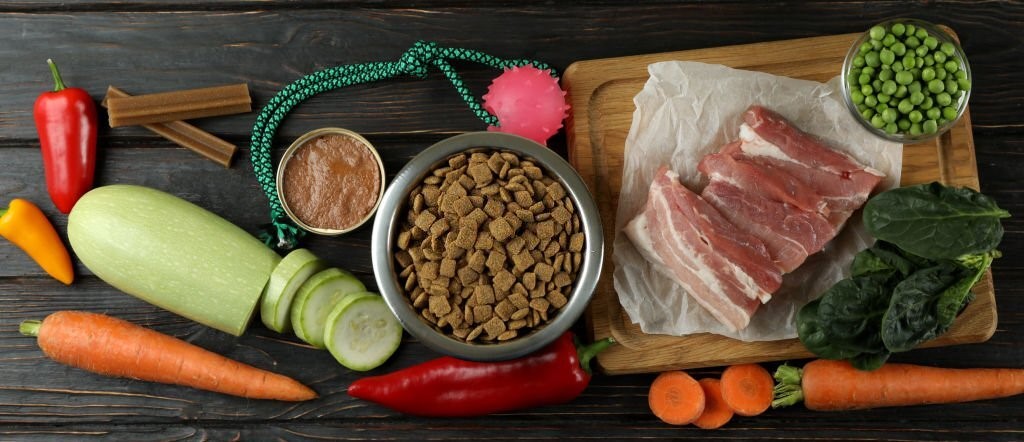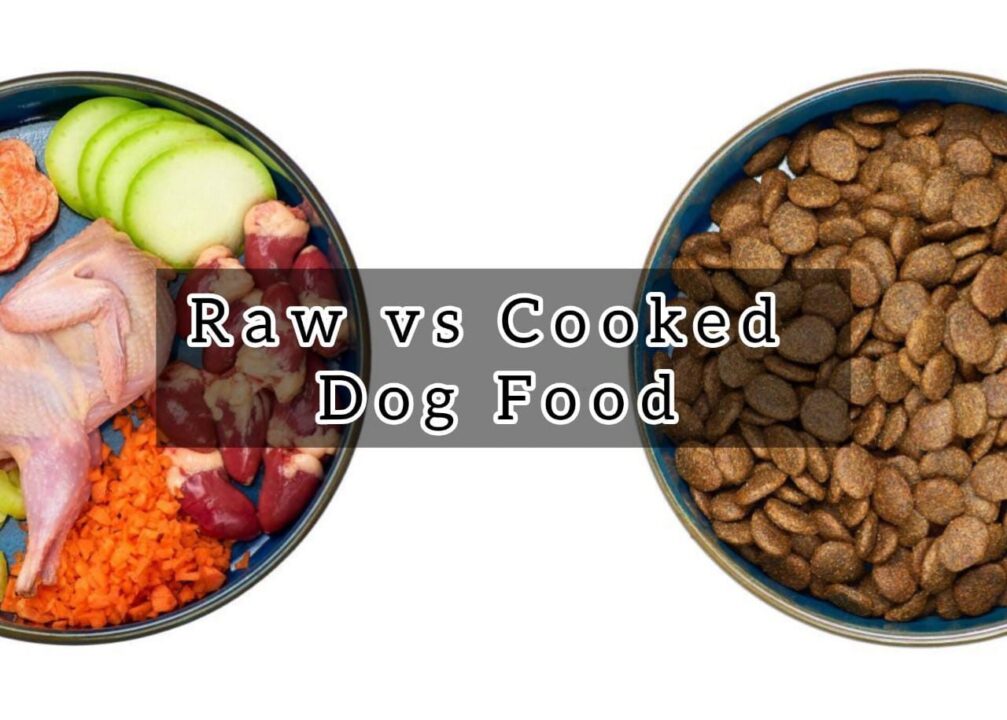When it comes to providing a healthy and balanced diet for our furry companions, there are various options available, including raw and cooked dog food. Pet owners are often faced with the dilemma of choosing between these two feeding methods. This article aims to explore the pros and cons of both raw and cooked dog food, shedding light on their impact on your pet’s health and well-being. Additionally, we’ll also discuss the importance of professional dog grooming courses in maintaining your pet’s overall health and appearance
Understanding Raw Dog Food
Raw dog food, also known as the “BARF” diet (Biologically Appropriate Raw Food), involves feeding dogs uncooked meat, bones, fruits, and vegetables. Proponents of raw diets argue that it mimics the natural diet of wild canines and promotes better digestion and nutrient absorption. Raw food can be prepared at home using high-quality ingredients or purchased commercially as pre-packaged meals.
Pros of Raw Dog Food
- Improved Digestion: Raw food enthusiasts claim that feeding dogs a diet of raw meat and bones can enhance their digestive health by providing natural enzymes and increasing beneficial gut bacteria.
- Enhanced Dental Health: Chewing on raw bones can help clean dogs’ teeth and gums, reducing the risk of dental issues such as tartar buildup and gum disease.
- Shinier Coat and Improved Skin: Supporters of raw diets often report that their dogs’ coats become shinier and their skin healthier after switching to raw food.
Cons of Raw Dog Food
- Nutritional Imbalance: Preparing a balanced raw diet can be challenging, as dogs require specific ratios of proteins, fats, and carbohydrates. Inadequate nutrition can lead to deficiencies or imbalances, affecting your pet’s health.
- Food Safety Concerns: Handling raw meat can expose both pets and humans to bacteria, such as Salmonella or E. coli. Proper hygiene and food handling practices are crucial to minimizing the risk of foodborne illnesses.
- Cost and Convenience: Raw dog food can be more expensive than commercial kibble, and the preparation process can be time-consuming and inconvenient for some pet owners.
Exploring Cooked Dog Food
Cooked dog food involves preparing and serving meals for your pet using cooked ingredients. This approach offers more variety in ingredients and allows for greater control over the nutritional content of the diet.
Pros of Cooked Dog Food
- Nutritional Control: Cooking allows pet owners to ensure their dogs receive a balanced and complete diet by carefully selecting and preparing ingredients that meet their pet’s specific dietary needs.
- Safety: Cooking ingredients at appropriate temperatures reduces the risk of foodborne illnesses, making it a safer option for households with young children, elderly individuals, or immunocompromised individuals.
- Convenience: Preparing cooked dog food in bulk and freezing individual portions can save time and make feeding more convenient.
Cons of Cooked Dog Food
- Nutrient Loss: Cooking can cause a loss of some nutrients, such as certain vitamins and enzymes, depending on the cooking method and duration. Supplementation may be necessary to compensate for these losses.
- Dental Health Considerations: Cooked diets often lack the dental benefits of raw bones and may require additional dental care, such as regular teeth brushing or dental chews, to maintain optimal oral health.
- Preparation Effort: Preparing cooked dog food can be time-consuming, requiring planning, cooking, and proper storage to maintain freshness and safety.
What Is the Difference Between Them?
 The main difference between raw and cooked dog food lies in the preparation method and the overall composition of the diet. Raw dog food is consumed in its natural state, without any cooking or processing. This means that it retains its natural enzymes, vitamins, and minerals. Proponents of raw dog food argue that this can lead to improved digestion, healthier skin and coat, and better overall vitality in dogs.
The main difference between raw and cooked dog food lies in the preparation method and the overall composition of the diet. Raw dog food is consumed in its natural state, without any cooking or processing. This means that it retains its natural enzymes, vitamins, and minerals. Proponents of raw dog food argue that this can lead to improved digestion, healthier skin and coat, and better overall vitality in dogs.
Cooked dog food involves the use of heat to prepare the ingredients, which can alter the nutritional profile to some extent. The cooking process can destroy certain enzymes and reduce the levels of heat-sensitive nutrients. However, it can also eliminate harmful bacteria and parasites, making the food safer for consumption. Additionally, cooking can improve the digestibility of some ingredients, making them more readily available for the dog’s body to absorb.
Ultimately, the decision between raw and cooked dog food should take into consideration your dog’s individual needs, any specific dietary requirements, and consultation with your veterinarian. Some dogs may thrive on a raw diet, while others may do better with cooked food. It’s important to monitor your dog’s health, digestion, and overall well-being when making dietary changes.
Here are the Comments from Users:
- Sarah: “I switched my dog to a raw diet a few months ago, and I’ve noticed significant improvements in her coat and overall energy levels. It takes a bit more effort to prepare, but it’s definitely worth it. I make sure to source high-quality ingredients and follow a balanced recipe to ensure she gets all the nutrients she needs.”
- Mark: “I prefer cooked dog food because I feel more confident about the safety and hygiene aspects. Plus, it allows me to include a wider variety of ingredients in my dog’s diet. I make sure to cook the ingredients thoroughly and follow a vet-approved recipe.”
- Lisa: “I tried both options, and my dog seemed to do well on both. Ultimately, I settled for a balanced approach by incorporating a mix of raw and cooked ingredients to provide the best of both worlds. It gives me peace of mind knowing that my dog is getting a diverse range of nutrients.”
Professional Dog Grooming Courses

While this article primarily focuses on the raw vs. cooked dog food debate, it’s worth mentioning that grooming plays a vital role in maintaining your pet’s overall health. Dog grooming training courses can equip you with the necessary knowledge and skills to properly groom your dog, ensuring their coat, skin, and overall appearance are well-maintained.
These courses cover topics such as proper bathing techniques, coat trimming, nail clipping, and detecting early signs of skin issues or parasites. By enrolling in professional dog grooming courses, you can become a responsible and capable pet owner, providing your furry friend with the care they deserve.
Conclusion
When deciding between raw and cooked dog food, it’s crucial to consider the individual needs of your pet and your own preferences. While raw food offers potential benefits in terms of digestion and dental health, cooked food provides nutritional control and convenience.
Ultimately, consulting with professionals in veterinary nutrition and considering your pet’s specific dietary requirements will help you determine the best approach to ensure your furry friend’s health and happiness. And don’t forget to prioritize grooming by considering professional dog grooming courses to maintain your pet’s overall well-being.



